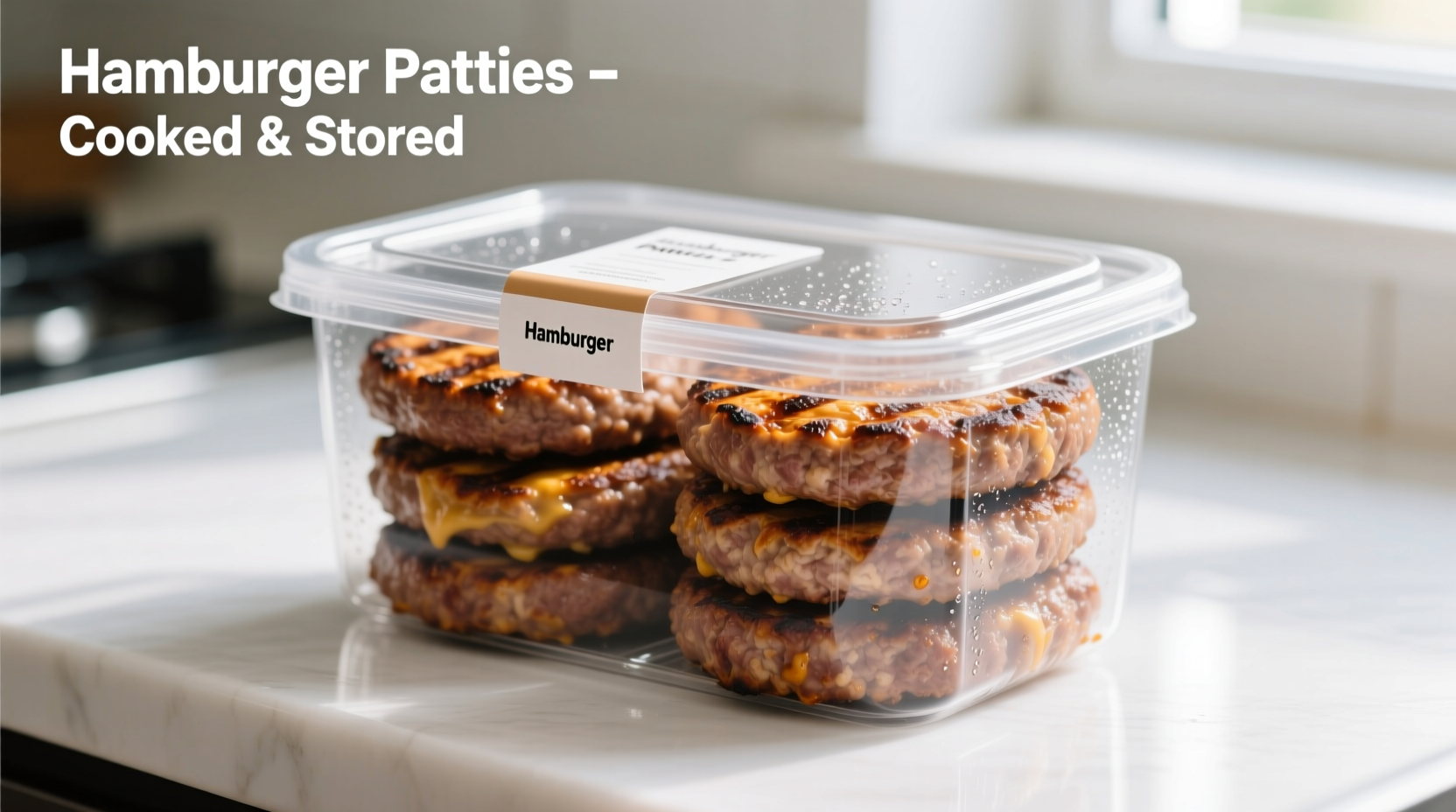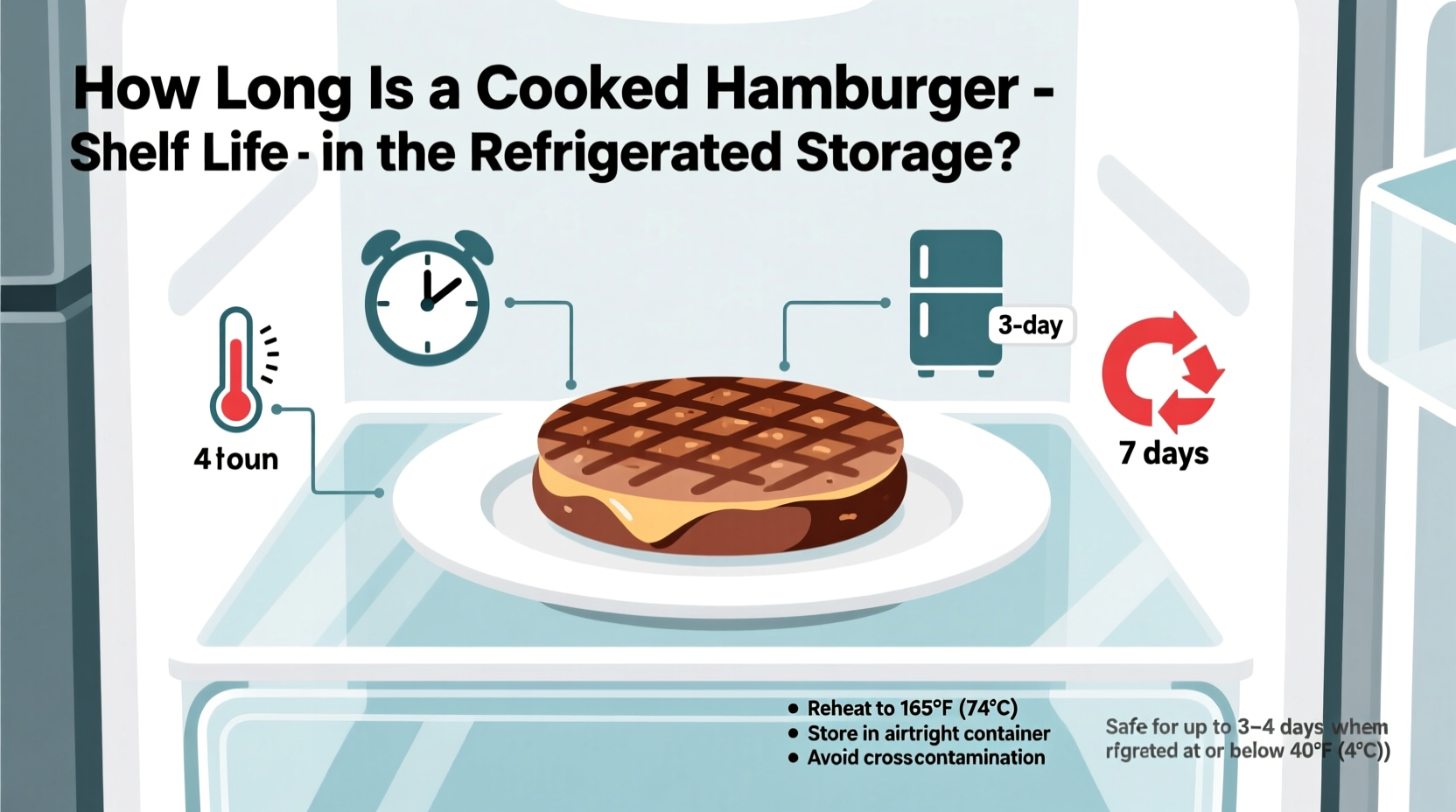Ever wondered whether those leftover patties from yesterday's barbecue are still safe to eat? You're not alone. Millions of home cooks face this food safety dilemma weekly. Getting this wrong could lead to foodborne illness, while throwing away perfectly good food wastes money and resources. Let's cut through the confusion with science-backed guidance you can trust.
Why Cooked Hamburgers Require Special Attention
Cooked ground beef presents unique food safety challenges compared to whole cuts of meat. The grinding process distributes surface bacteria throughout the meat, creating more opportunities for pathogens like Salmonella and E. coli to multiply after cooking. Unlike a steak where heat kills surface bacteria, ground meat requires careful post-cooking handling.

The Science Behind the 3-4 Day Rule
Food safety experts established the 3-4 day guideline based on bacterial growth rates in the "danger zone" (40°F-140°F). Here's what happens when cooked hamburgers sit in your refrigerator:
| Time After Cooking | Temperature Conditions | Bacterial Activity |
|---|---|---|
| 0-2 hours | Room temperature | Bacteria double every 20 minutes |
| 2-4 hours | Refrigerator (40°F or below) | Growth slows significantly but continues |
| 4 days | Proper refrigeration | Pathogen levels may reach dangerous thresholds |
This timeline comes directly from the USDA Food Safety and Inspection Service, which monitors bacterial growth patterns in various food storage conditions. Their research shows that while refrigeration slows bacterial multiplication, it doesn't stop it completely.
Maximizing Safety and Shelf Life: Your Action Plan
Immediate Cooling Matters Most
The clock starts ticking the moment your hamburger comes off the grill or out of the pan. Follow these critical steps:
- Divide and conquer: Split large batches into smaller portions to cool faster
- Shallow containers: Store in containers no deeper than 2 inches
- Speed cooling: Place containers in ice water bath before refrigerating
- Refrigerate within 2 hours (1 hour if room temperature exceeds 90°F)
Proper Storage Techniques That Make a Difference
How you store cooked hamburgers significantly impacts their safety and quality:
- Airtight containers prevent moisture loss and cross-contamination
- Vacuum sealing extends freshness by removing oxygen that bacteria need
- Label containers with cooking date using waterproof markers
- Store on middle shelf where temperature remains most consistent
When the Clock Runs Out: Recognizing Spoilage
Even within the 3-4 day window, improper storage can cause premature spoilage. Check for these warning signs before eating:
- Texture changes: Slimy or sticky surface indicates bacterial growth
- Odor development: Sour or unpleasant smell means spoilage
- Color shifts: Grayish hue or unusual discoloration
- Mold appearance: Any visible mold means immediate disposal
Remember: When in doubt, throw it out. No amount of reheating can destroy certain toxins produced by bacteria once they've multiplied to dangerous levels.
Freezing: Your Extended Storage Option
If you won't eat leftovers within 3-4 days, freezing preserves cooked hamburgers for longer periods:
- Properly frozen cooked hamburgers remain safe for 2-3 months
- Use freezer-safe containers or heavy-duty freezer bags
- Remove as much air as possible to prevent freezer burn
- Thaw in refrigerator overnight before reheating
Reheating Leftovers Safely
Proper reheating kills remaining bacteria but doesn't reverse spoilage:
- Heat to internal temperature of 165°F (74°C)
- Use food thermometer to verify temperature
- Stir when reheating in microwave for even heating
- Consume immediately after reheating
Common Misconceptions About Leftover Safety
Let's address frequent misunderstandings that put people at risk:
- "If it smells okay, it's safe" - Many dangerous bacteria don't produce noticeable odors
- "The 5-second rule applies to leftovers" - Time limits are based on bacterial growth rates, not surface contact
- "I can just cut off the moldy part" - Mold roots penetrate deeper than visible, and toxins may have spread
- "Freezing kills all bacteria" - Freezing only pauses bacterial growth; pathogens reactivate when thawed
Special Considerations for Vulnerable Groups
Certain populations face higher risks from foodborne illness. If serving leftovers to anyone in these groups, consider reducing the storage window to 2-3 days:
- Children under 5 years old
- Adults over 65 years old
- Pregnant women
- Individuals with compromised immune systems
The CDC specifically recommends extra precautions for these vulnerable populations, as foodborne illnesses can lead to more severe complications.
Practical Leftover Management System
Create a foolproof system for tracking and using leftovers:
- Store cooked hamburgers in clear containers for visual inspection
- Label with cooking date using "eat by" calculator (current date + 3 days)
- Place new leftovers behind older ones in refrigerator (first in, first out)
- Create a weekly "leftover night" to prevent forgotten food
- Plan meals that incorporate leftovers before they expire
Final Safety Checklist Before Eating Leftovers
Run through this quick verification before consuming refrigerated cooked hamburgers:
- Has it been less than 4 days since cooking?
- Was it properly cooled and stored in airtight container?
- Does it pass the visual inspection (no discoloration, mold)?
- Does it pass the smell test (no sour or off odors)?
- Does it feel slimy or sticky to the touch?
Failure on any of these points means it's time to discard the leftovers. Your health isn't worth the risk of food poisoning.











 浙公网安备
33010002000092号
浙公网安备
33010002000092号 浙B2-20120091-4
浙B2-20120091-4